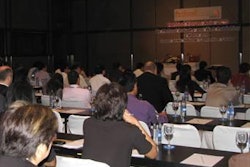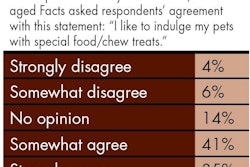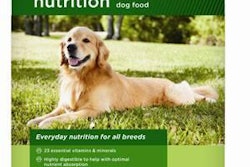While humanization has definitely been a good thing for the petfood industry, it has its downsides, too. One negative for pets, arguably, is that as the human population goes, at least in developed markets, so goes the pet overpopulation. Specifically for food, that means the percentage of overweight or obese pets is increasing at a pace similar to the rise of obesity in humans.
According to the US Centers for Disease Control and Prevention, 68% of US adults are now overweight or obese; 33.8% are considered obese. With US pets, 32% of cats are classified as overweight by their veterinarians, with another 21.6% considered clinically obese; among dogs, the figures are 35% for overweight and 20.6% for obesity. That data comes from the fourth annual Association for Pet Obesity Prevention National Pet Obesity Awareness Day Study released in February 2011.
Blame for rising obesity in humans often lands, rightly or wrongly, on fast food marketers and other manufacturers of food high in calories and fat. Similarly, over the past decade or so, as premium and superpremium petfoods have come to dominate the US and other developed markets, some veterinarians and other pet health experts have targeted petfood manufacturers as at least partially to blame for increasing pet obesity.
But that's not always the case. Louise Murray, DVM and VP of the American Society for the Prevention of Cruelty to Animals' Bergh Memorial Hospital in New York, USA, seems to pinpoint pet owners' desire to feed their pets well (just as they do human family members) as a leading reason behind pet obesity. In an article in the Chicago Tribune by William Hageman, Dr. Murray is quoted: "We see them as part of the family and we feed them. (The obesity) comes from a good place because we love them."
Also quoted in the article, Thomas Graves, a professor of veterinary clinical medicine at the University of Illinois' College of Veterinary Medicine and director of the Chicago Center for Veterinary Medicine, goes so far as to absolve petfoods: "The truth about petfood is that most petfoods are really good. The petfood companies spend lots of money researching proper nutrition. They want pets fed healthy food that keeps them alive for a long time -- and buying more food."
Indeed, many of you are using ingredients and technology to offer healthier foods to help combat pet obesity. Search our database of new petfoods and treats, and you'll find plenty with weight control claims. (Also watch for an article on PetfoodIndustry.com soon.)
Could the industry do more? I believe it could, starting with including calorie content information on petfood labels, websites and other consumer-facing information sources. (The Association of American Feed Control Officials may be mandating that the information appear on petfood packaging soon.) Also, providing clear directions and amounts for feeding portions that pet owners can easily understand and use would help, as would including a cup or scoop marked with measurements. Research has shown that the size of dog food bowls and scoops has an effect on how much owners feed (and overfeed).
It's true that for both humans and pets, the real cause of overweight or obesity is too much energy (in the form of calories) taken in and not enough expended, and ultimately, a change in eating and exercise behavior has to occur to address that. But considering that most pets have little to no control over their what or how much they eat, we humans need to do all we can to keep them at their healthy weights.
















